
First, a rant. The good side of the drought and irregular weather we’re experiencing here in California is that it provides an opportunity to rethink our unimaginative “mow and blow” residential landscaping. On the bad side, opportunistic politicians have used residential watering as a red herring to divert attention from the real water problem here in California: industrial agriculture. The lawn rebate programs and constant messaging to reduce residential watering has resulted in thousands of dead trees and handouts to fly-by-night landscaping companies that installed gravel moonscapes and disappeared as soon as the rebate program ended. What we need is not calls to end landscape irrigation in our yards and parks. What we need is responsible and thoughtful irrigation. We can transition away from water hungry lawns and plantings and towards California natives and other climate-appropriate plants. But we will still need to irrigate to establish those new plantings. And we should continue to irrigate mature trees.
OK, enough with the rant. One of the great benefits of garden tours like the one Kelly and I went on this past weekend, sponsored by the Theodore Payne Foundation, is that they give examples to imitate for people like us who can’t afford the services of landscape architects. Perhaps most importantly, they show how a coastal California landscape can be lush without using much water. Coastal California is not a desert (at least not yet). No need for gravel.
I thought I’d look at some of the lessons I learned on the tour. Please excuse the less than optimal photography. Good garden photos are taken before the sun comes up and the tour was mid-day on an unseasonably warm and bright sunny day.
Massing

Again, this may be the single most important message for amateurs planning a residential garden in California: natives look best when grouped and appropriately spaced into a mass that mimics the density of native chaparral. Spacing can be tricky. You have to pay attention to nursery labels and not plant too far apart or too close together. Not that plants always perform predictably. You have to go back and edit: fill gaps in or take stuff out. The best gardens on the tour got the massing right like the Hessing/Bonfigli garden in Altadena shown in the photo above.
Outdoor Rooms

My favorite garden on the tour is the Loxton/Clark garden in Pasadena. It’s a series of seductive outdoor rooms and cute little sheds (she shacks?) built from recycled materials. It invites you to sit down, read a book, relax and maybe take a nap. All spaces are small and divided. These sorts of divided and protected spaces, I think, make us humanoids more comfortable. How inviting, after all, is it to sit in the middle of a football field? We prefer being under a tree, in an outdoor room or sheltered in a cave. One more example of an outdoor room from the same garden:

Details
Most people, I think, at least unconsciously like gardens that hint at a human presence. That could take the form of some bells hanging from a tree as in the Sovich garden in Glendale:

Or one of the alters in the Loxton/Clark garden:

Or one of the many fantastic sheds in the Loxton/Clark garden:
 Or this inventive bit of garden art from the Hessing/Bonfigli garden in Altadena:
Or this inventive bit of garden art from the Hessing/Bonfigli garden in Altadena:

Kelly and I both have mixed feelings about using found materials in a garden. I think the focus is often too much on telling a kind of visual joke, like when you, say put googly eyes on a old muffler and paint it purple. What works about the found art examples below and above from the Hessing/Bonfigli garden is that they aren’t “one liners”.

Places to sit are also important. It doesn’t take much to make a simple seat like this one from the Johnson/Goldman garden in Silver Lake:

And it’s also important to provide habitat for our bird and insect friends such as this small water basin and perch at the Miller/Coon garden in Atwater:

Edibles/Medicinals
Just because you have native plants does not meant that you can’t also have vegetables and fruit trees. In fact, edibles benefit from the insect habitat provided by native plants. Over the years we’ve increased our natives and decreased our vegetables. I think we might be getting more veggies now from a smaller space. We also need to remember that many native plants are edible and medicinal such as these strawberries from the LaPlant/D’Auria garden in Sierra Madre:

And the white sage in the background of this garden behind the datura (careful with that stuff!):

While we’re talking about white sage, the same weekend we attended a lecture by Nicholas Hummingbird who runs the fantastic new Hahamongna Nursery. Hummingbird, who is Native American, spoke of how deeply offended he is by the collection of white sage in sensitive habitats to sell smudge sticks. He described it as like breaking into a church and stealing holy water. Grow it in your garden and you can harvest responsibly. Yearly pruning will provide all the smudge sticks you’ll need.
Pots on pedestals

Kelly observed, “potted plants look best when they’re on pedestals.” Sure enough, most of the gardens on the tour that had potted plants had them on some sort of platform. Chalk this up as one for the “honey do” list.
Speaking of Honey do’s

The expression on Kelly’s face says: Erik you better build me a garden shed like this one at the Loxton/Clark garden. Duly noted.
Lastly, our neighbor Lora (who also went on the tour) came over yesterday and we had a spirited discussion of “neatness” in these gardens as well as how much labor a garden takes to maintain. Sometimes a garden tour brings up more questions than answers. How much gardening skill can we expect from the average homeowner? What is the roll of mow and blow crews? How best to communicate the value of gardens that benefit pollinators? How do we make gardens that appeal to a “neat” aesthetic? These are thorny, so to speak, topics that will have to be dealt with in many more blog posts. I’ll let Kelly tackle those subjects while I get going building that garden shed.
Support Root Simple
Tending the Wild: Native American Knowledge and the Management of California’s Natural Resources by M. Kat Anderson. John Muir was an early proponent of a view we still hold today—that much of California was pristine, untouched wilderness before the arrival of Europeans. But as this groundbreaking book demonstrates, what Muir was really seeing when he admired the grand vistas of Yosemite and the gold and purple flowers carpeting the Central Valley were the fertile gardens of the Sierra Miwok and Valley Yokuts Indians, modified and made productive by centuries of harvesting, tilling, sowing, pruning, and burning.

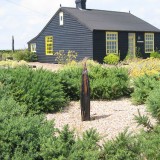
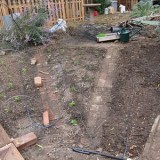
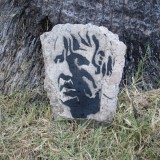
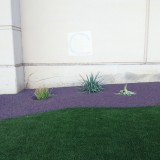
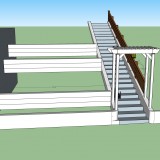
Lovely, as always.
I inherited a concrete pad that was intended as a hot tub pad that I am working on turning into more of an outdoor room rather than just a chunk of concrete overlooking lawn (sigh). It’s already a platform, so I’m thinking adding some potted plants to it might just be the perfect thing!
Thanks Kyle! Sounds perfect-and much easier than breaking it up!
Great photos! They have given me lots of ideas for my own yard. Good luck with shed. I would love one too but that will have to be further down the line.
Pingback: 080 Lessons From the Theodore Payne 2016 Garden Tour | Root Simple
Love this. It’s really smart take-away from the tour. Thing I found myself wrestling with, and would like more dialogue on, is how to plant in both tight spaces, and in places where light and drainage is a challenge. Yes, there are ample plants to fit the bill, but I think that there could be more helpful take-away on the tour about issues they’ve encountered, failures from previous attempts, and even property diagrams with plantings, water/light needs, and soil type. As for the creation of meditative and magical spaces- great focus! My daughter is already reaping rewards from this post!
Agreed. I have yet to see a good book or resource on gardening in small spaces. Also, how to deal with existing conditions–like, say, houses that are sliding down a hillside or adjacent to bank parking lots. And your house should be on the tour!
Well…our house is sort of a meditation on how to play around with old, bad landscaping choices, weird lighting, and raise drought tolerants near water-hungry fruit trees (I’m pretty sure I’ve invented “water hungry barrier planting”). That said, the evolution of all this is pretty intense- what seems like the perfect garden in January is suddenly an over-crowded jungle in late March. Let’s not even get into the ever-emboldened critters, who now leap over my broom to keep eating the loquats.